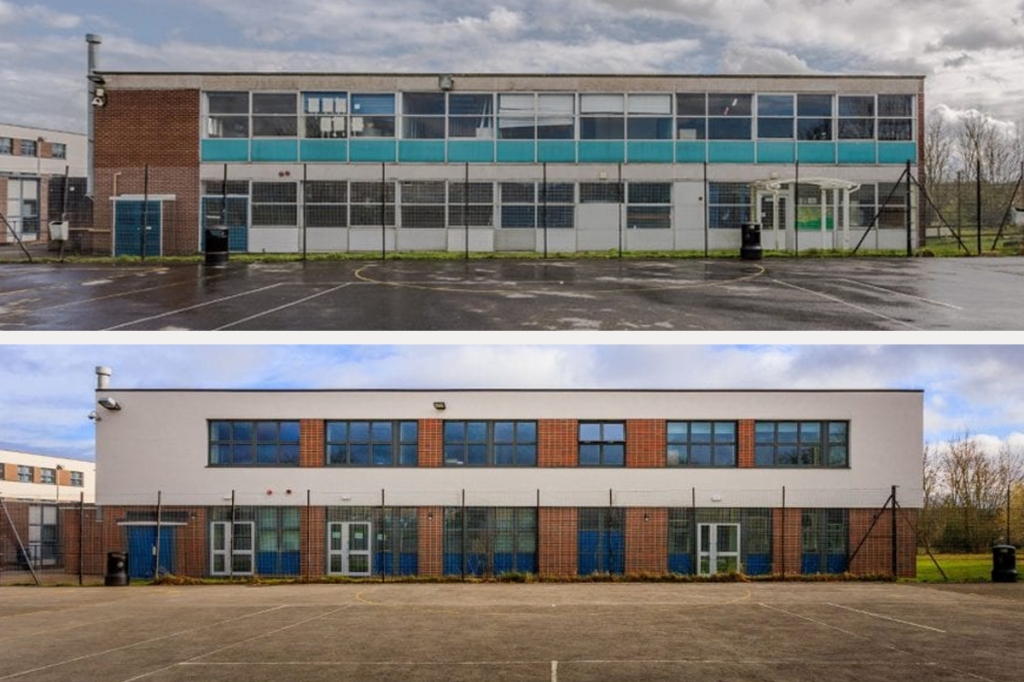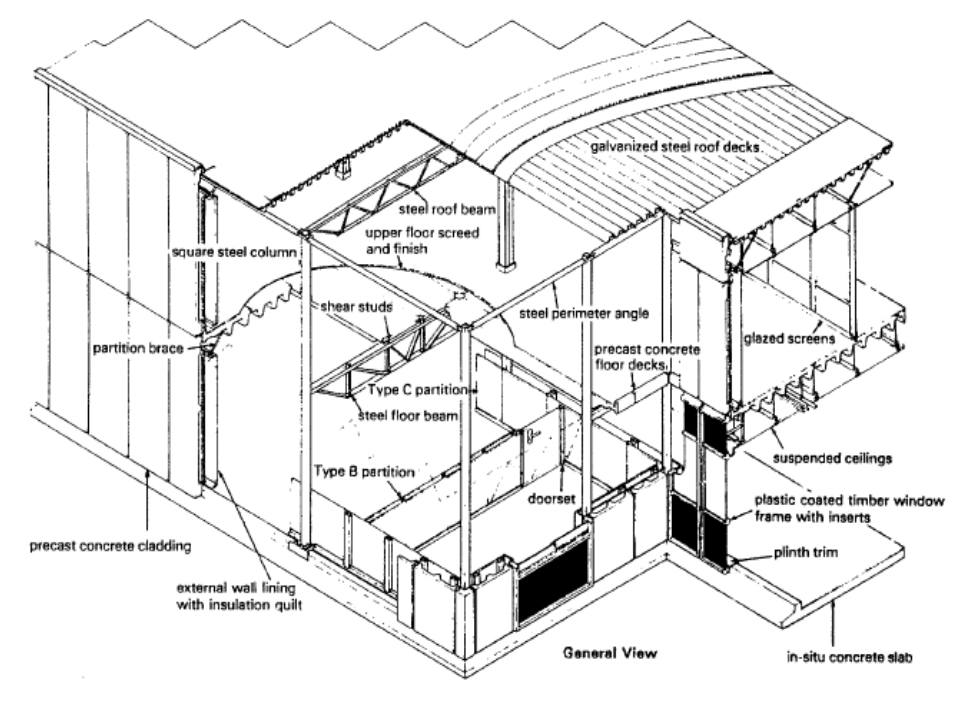When I moved to the UK as a teenager, I enrolled at the local college to do my A levels. I found the building ugly, uninspiring and decrepit, and they’ve since knocked it down and built expensive flats on the site. But I couldn’t help noticing that the high schools I could have gone to instead were very similar. British schools all seemed to look the same, with their boxy shapes and coloured panels.
Thirty years later I find myself visiting schools on a regular basis. I went to four different primary schools last week, and they have a certain look about them. All too often that’s a rather ugly and out of date look, and there’s a story there: for years, Britain’s schools were built from a catalogue.
In the post-war era, the government had a nation to rebuild and modernise. People were also having more babies, which led in short order to demand for new schools. The authorities needed a way to build schools cheaply and quickly, and a man named Charles Herbert Aslin came up with a solution. He was the in-house architect for Hertfordshire County Council, and in 1957 he developed a building system using steel frames and concrete panels. Also, to keep costs down, asbestos – a decision which continues to trouble the sleep of public sector building managers to this day.
At the time however, the system was highly effective. Over a hundred schools in the region were built using his methods, which was called CLASP (Consortium of Local Authorities Special Programme). Similar projects followed in other regions over the next couple of decades, each with their own acronym – SEAC, CMB, ONWARD, CLAW.
One of the most successful schemes was the school specific SCOLA. By 1971 a thousand schools had been assembled from its catalogue of prefabricated parts, and two thirds of all new school builds in the country used the system. The CEO of Sanders & Forster Ltd, writing in an industry magazine that year, boasted that they “are now providing the steelwork for four schools per week in the SCOLA system”.
There’s a reason why they were so popular. A building system made design affordable. It was highly flexible, allowing clients to build exactly what they needed and with clear and transparent pricing. It was also versatile enough to accomodate hybrid construction techniques, so if you wanted a bespoke entrance or some local character, that was entirely possible. If so many of those schools turned out to be generic boxes, it wasn’t entirely the fault of the system engineers.
54 out of 59 councils in England and Wales were part of one of more of these consortia during the 1970s, which is why their cookie-cutter buildings are found all over the country. As well as schools, building systems were used to build hospitals, council offices and stations, while commercial equivalents were developed for supermarkets and warehouses.
The era of prefabrication didn’t last, and ‘prefab’ in time became a byword for cheap and unloved. Despite this, many schools in Britain still date from this era – and all of their problems remain. They haven’t aged well, and many of them look terrible. The flat roofs leak. They are poorly insulated, making them cold and expensive to heat in the winter, and prone to overheating in the summer. That affects learning, and I find it rather tragic that so many generations of British children have had to put up with it as normal.
Running energy intensive and inefficient schools is a burden on public spending and a big source of emissions. Helping schools to fix that is now part of my job.
What do we do about all those schools, creaking along decade after decade, barely fit for purpose in the 21st century? The original CLASP system was designed to last 60 years, so they’re already beyond their planned life. It many cases it will be time to knock them down and build something better, to modern educational and environmental standards.
That’s not always necessary. Steel frame buildings are highly durable, and hundreds of system-built schools have been successfully refurbished. Here’s Aldworth School in Hampshire:

Some firms have come to specialise in refurbishments like these, making it much more affordable than initially thought. Keeping the essential structure of older buildings is a huge saving on embedded emissions, so there are environmental gains from refurbishment.
Ultimately though, children spend so much of their young lives at school that they deserve the best we can afford. Safe and functional school buildings, yes, but why not buildings that are beautiful and interesting places too? Schools that children are proud to attend and that – if the adults allow it – are fun as well. Not every SCOLA building will deliver that kind of refurbishment, and we should do what works best for each context.
And while we’re at it, maybe it’s time to think again about building systems. There were good ideas in the original CLASP programme. What if we took the best of them and applied modern standards, sustainable materials, and what we know about biophilic design? Can we imagine a catalogue for building beautiful net zero schools, making the process easy and transparent and affordable? Can we imagine school children contributing to those designs, making it an inclusive and child-friendly project?
Perhaps it’s time to consider a transformative new programme of affordable low carbon schools, and a more positive legacy of school construction for future generations.


British=English.
No, these were built nationwide.
yes, yes and yes please!